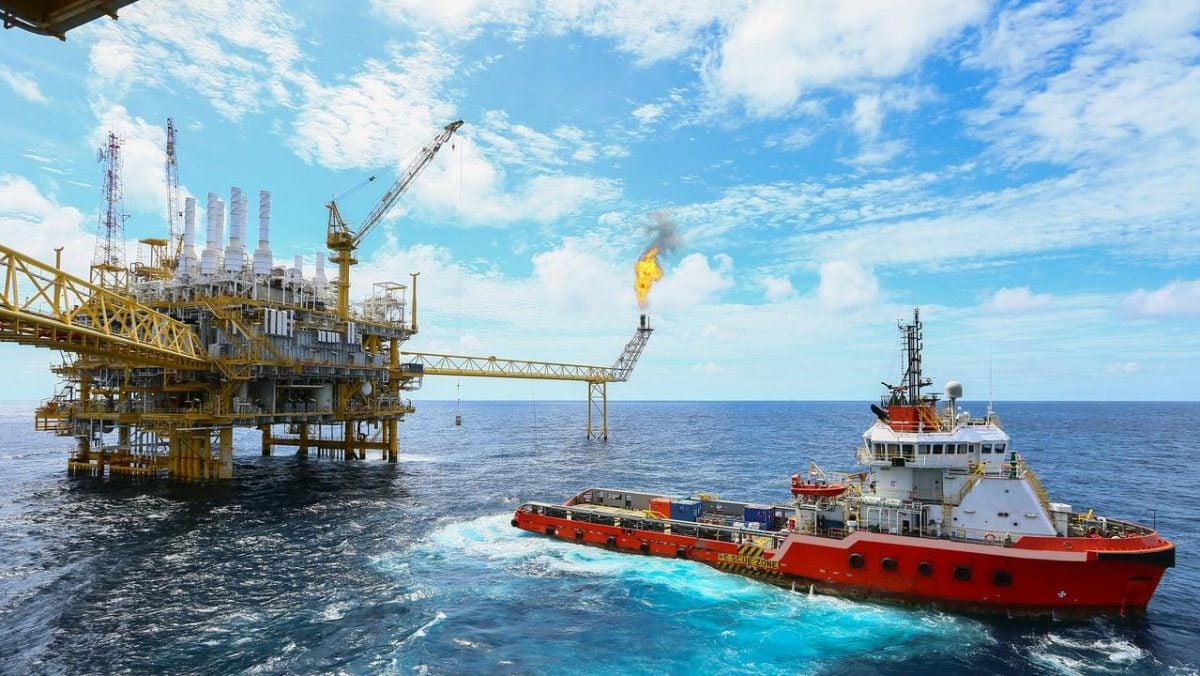The Australian Woodside Company has made the final investment decision in Mexico’s first deepwater field. This may revive work on developing competing projects in the coming months.
The independent Australian company – which specializes in oil and gas exploration – announced that it had taken the final investment decision in the “Trion” field in Mexico, at a cost of $ 7.2 billion.
It is expected that the volume of recoverable production from this field will reach approximately 479 million barrels of oil equivalent, according to estimates by the energy research company, “Wood Mackenzie”, which expressed optimism about the decision of the Australian Woodside.
Australia’s Woodside plans to produce the first oil from the deepwater field in Mexico by 2028, with infrastructure engineering, procurement and construction contracts to start as early as 2023.
The Australian company, in partnership with the Mexican government Pemex, also plans to start drilling the first of the 24 planned wells in the project by 2026, according to the Energy Research Unit.
Woodside owns 60% and Pemex 40%.
Australia’s Woodside owns 60% of the Tryon project with $4.8 billion of the cost, while state-owned Pemex holds 40% with $2.4 billion of the cost.
The Australian company expects its investment in this project to achieve an internal rate of return – the minimum return on the capital that the company accepts to make the investment – greater than 16%, with costs recouped in less than 4 years, according to Reuters.
Wood Mackenzie expects that the volume of capital expenditure in the “Tryon” field will reach 80% of the total capital expenditure allocated to it by 2033, when it is expected that the field’s production will reach a high level.
The research firm also estimates that the development of the Tryon field will motivate Mexico’s Pemex to move ahead with the development of the deepwater Maximino-Nobilis project, just 35 kilometers away.
This project faces the challenges of the absence of infrastructure, which made its costs difficult to bear, but the start of the infrastructure of the nearby “Trion” project may represent a great opportunity for its development, according to estimates by Wood Mackenzie.
Production will start via the floating unit 2028
Australian Woodside says it will rely on a floating production unit in the Tryon field, with a production capacity of 100,000 barrels of oil per day, with the first production targeted in 2028.
The Tryon field was discovered in the deep waters of Mexico in 2012, mediated by Pemex, and is located in the Perdido Basin, 180 km off the Mexican coast, at a depth of 2,500 meters.
The Australian company Woodside entered the project to succeed BHP Group, which had planned to make a final decision on it in 2022, but high costs led to delays.
The Australian Woodside is facing intense criticism from environmental and climate activists as one of the companies investing in fossil fuel projects that pollute the environment and are against national and global emission reduction targets, according to the criticism of activists that the Energy Research Unit monitors periodically around the world.
The Australian company has undertaken to implement emissions intensity reduction initiatives in the Mexico project through the use of high-efficiency compressors, waste heat recovery technologies and more.
The emissions measurement tool at Wood Mackenzie indicates that the “Tryon” field project’s low emissions intensity compared to other oil resource projects in the world.
The average project intensity, as measured by this metric, is approximately 12 tonnes of CO2e per 1,000 boe, which is lower than the global average for deepwater projects.
Mexico’s oil production has been stable since 2019
Mexico is witnessing stability in oil production at 1.9 million barrels per day from 2019 to 2022, amid estimates from the US Energy Information Administration that it will remain at this level until 2024.

Mexico’s production of oil and liquid fuels reached its historical peak in 2004, recording 3.9 million barrels per day, then it entered a series of repeated declines, until it stabilized at 1.9 million barrels per day in 2019, and it has not risen or fallen significantly from that level so far, according to As monitored by the Energy Research Unit.
Mexico’s proven oil reserves have fallen to 6 billion barrels by the end of 2022, compared to 10 billion in 2014, according to Oil & Gas Journal estimates.
As for the British oil company BP, its data indicates a decline in Mexican oil reserves to 6.1 billion barrels by the end of 2020, compared to 55 billion barrels in 1983, which represents a very sharp decline.

Leave a Reply